AR
-
 Dr. Lyu Opens Oriental Health Clinic for KAIST Students on Campus
Dr. Keun-Chul Lyu, an Oriental medical scientist who donated property valued at 57.8 billion won (US$56 million) to KAIST last year, opened a health clinic and a medical research center for astronauts on the KAIST campus on Monday (April 13).
The opening of the two facilities represent the scientist"s lifelong wish to serve society by giving back his knowledge, experience and assets.
Monday"s opening ceremony was attended by 100-odd well-wishers including KAIST President Nam-Pyo Suh, Daejeon City Mayor Sung-Hyo Park and Ki-Ok Kim, President of the Korea Institute of Oriental Medicine.
Dr. Lyu"s Health Clinic which is equipped with eight units of medical treatment apparatus called "health booster" that Dr. Lyu developed will offer free medical care for KAIST students. "I would like to open the clinic as a space where students can receive medical treatment and rest anytime," Dr. Lyu said.
The research center for astronauts will focus on the researches to take care of health of space fliers and to help lessen the impact astronauts suffer when the spacecraft enters into the earth´s atmosphere.
On the same day, Dr. Lyu donated his lifetime collection of about 500 rare relic items such as Buddhist statues, ink stones and incense burners to KAIST.
2009.04.15 View 12169
Dr. Lyu Opens Oriental Health Clinic for KAIST Students on Campus
Dr. Keun-Chul Lyu, an Oriental medical scientist who donated property valued at 57.8 billion won (US$56 million) to KAIST last year, opened a health clinic and a medical research center for astronauts on the KAIST campus on Monday (April 13).
The opening of the two facilities represent the scientist"s lifelong wish to serve society by giving back his knowledge, experience and assets.
Monday"s opening ceremony was attended by 100-odd well-wishers including KAIST President Nam-Pyo Suh, Daejeon City Mayor Sung-Hyo Park and Ki-Ok Kim, President of the Korea Institute of Oriental Medicine.
Dr. Lyu"s Health Clinic which is equipped with eight units of medical treatment apparatus called "health booster" that Dr. Lyu developed will offer free medical care for KAIST students. "I would like to open the clinic as a space where students can receive medical treatment and rest anytime," Dr. Lyu said.
The research center for astronauts will focus on the researches to take care of health of space fliers and to help lessen the impact astronauts suffer when the spacecraft enters into the earth´s atmosphere.
On the same day, Dr. Lyu donated his lifetime collection of about 500 rare relic items such as Buddhist statues, ink stones and incense burners to KAIST.
2009.04.15 View 12169 -
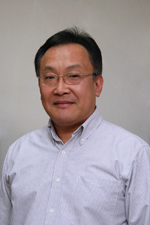 KAIST Prof. Park Selected as Winner of Clemson Award
Professor Tae-Gwan Park of the Department of Biological Sciences, KAIST, was chosen as the winner of the 2009 Clemson Award for Fundamental Research, university authorities said on Tuesday (April 7).
The award is the highest recognition of the Society for Biomaterials, an international organization of more than 3,000 members that promotes research in the field of biomaterials. Prof. Park is cited for his outstanding achievements in interdisciplinary research covering gene transferring, gene therapy and neogenesis. It is rare for a non-U.S. national to win the prize in the 36-year history of the award.
The award will be given to Professor Park at the Annual Meeting of the society which will be held in San Antonio, Texas, on April 22.
2009.04.09 View 14435
KAIST Prof. Park Selected as Winner of Clemson Award
Professor Tae-Gwan Park of the Department of Biological Sciences, KAIST, was chosen as the winner of the 2009 Clemson Award for Fundamental Research, university authorities said on Tuesday (April 7).
The award is the highest recognition of the Society for Biomaterials, an international organization of more than 3,000 members that promotes research in the field of biomaterials. Prof. Park is cited for his outstanding achievements in interdisciplinary research covering gene transferring, gene therapy and neogenesis. It is rare for a non-U.S. national to win the prize in the 36-year history of the award.
The award will be given to Professor Park at the Annual Meeting of the society which will be held in San Antonio, Texas, on April 22.
2009.04.09 View 14435 -
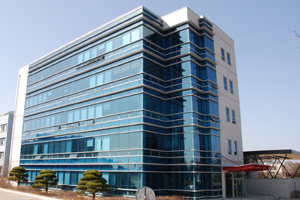 KAIST Dedicates Geocentrifuge Experiment Center
KAIST dedicated the KOCED Geo-Centrifuge Experiment Center for researches in monitoring natural disasters such as earthquake and embankment collapse through miniature simulation tests on Wednesday (April 9) after a two-year construction work.
The experiment center is part of the Korea Construction Engineering Development Collaboratory Program (KOCED) which has been sponsored by the Ministry of Land, Transport and Maritime Affairs to build an infrastructure for construction engineering researches at a national level. The ministry plans to build a total of 5 similar centers nationwide by the end of the year.
On hand at the dedication ceremony were Jae-Choon Lee, President of the Korea Institute of Construction & Transportation Technology Evaluation and Planning, KAIST President Nam-Pyo Suh, and scores of experts and administration officials.
The construction of the five-story building on an area of about 3,328 square meters cost 8.4 billion won (US$6.3 million).
The center is expected to serve as a major laboratory in the field of geotechnical engineering. It is equipped with such state-of-the-art facilities as geocentrifuge, a useful tool for studying flow in unsaturated soil under well-controlled, repeatable conditions, a bidirectional shaking-table that can reproduce earthquake-like wave; and robots that can reproduce construction procedures by remote control.
Geocentrifuge experiment allows detecting ground and structure motions easily and rapidly by simulation tests. Thus, it is widely used for various geotechnical engineering researches such as evaluation of seismic safety, soft ground movement, slope stability analysis, etc. The causes of the embankment collapse in New Orleans by Hurricane Katrina in 2005 were also revealed by the geocentrifuge experiment.
The geocentrifuge research facility is available for use by outside researchers, so scientists from other universities, research institutes and corporations can perform research and test their scientific and engineering hypotheses.
The center is divided into two sections, experiment building and research building. The experiment building is composed of a geocentrifuge laboratory, model-making rooms, workshops, a geotechnical engineering laboratory and specimen storehouse, while the research building has a control room, a video conference room, an electronic library and research rooms.
2009.04.09 View 14737
KAIST Dedicates Geocentrifuge Experiment Center
KAIST dedicated the KOCED Geo-Centrifuge Experiment Center for researches in monitoring natural disasters such as earthquake and embankment collapse through miniature simulation tests on Wednesday (April 9) after a two-year construction work.
The experiment center is part of the Korea Construction Engineering Development Collaboratory Program (KOCED) which has been sponsored by the Ministry of Land, Transport and Maritime Affairs to build an infrastructure for construction engineering researches at a national level. The ministry plans to build a total of 5 similar centers nationwide by the end of the year.
On hand at the dedication ceremony were Jae-Choon Lee, President of the Korea Institute of Construction & Transportation Technology Evaluation and Planning, KAIST President Nam-Pyo Suh, and scores of experts and administration officials.
The construction of the five-story building on an area of about 3,328 square meters cost 8.4 billion won (US$6.3 million).
The center is expected to serve as a major laboratory in the field of geotechnical engineering. It is equipped with such state-of-the-art facilities as geocentrifuge, a useful tool for studying flow in unsaturated soil under well-controlled, repeatable conditions, a bidirectional shaking-table that can reproduce earthquake-like wave; and robots that can reproduce construction procedures by remote control.
Geocentrifuge experiment allows detecting ground and structure motions easily and rapidly by simulation tests. Thus, it is widely used for various geotechnical engineering researches such as evaluation of seismic safety, soft ground movement, slope stability analysis, etc. The causes of the embankment collapse in New Orleans by Hurricane Katrina in 2005 were also revealed by the geocentrifuge experiment.
The geocentrifuge research facility is available for use by outside researchers, so scientists from other universities, research institutes and corporations can perform research and test their scientific and engineering hypotheses.
The center is divided into two sections, experiment building and research building. The experiment building is composed of a geocentrifuge laboratory, model-making rooms, workshops, a geotechnical engineering laboratory and specimen storehouse, while the research building has a control room, a video conference room, an electronic library and research rooms.
2009.04.09 View 14737 -
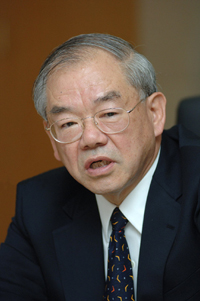 President Suh to Receive Honorary Doctorate from Romanian University
KAIST President Nam-Pyo Suh will receive an honorary doctorate degree from Babes-Bolyai University in Cluj-Napoca, Romania, in a ceremony at the university on April 3, school authorities said.
Andrei Marga, rector of the largest Romanian university, said in a letter to President Suh that the university decided to award Suh the title of Doctor Honoris Cause of Babes-Bolyai University, the highest academic honor of the university, in recognition of his "prestigious actions as academic leader of a university known worldwide and for contribution to cooperation between Romania and South Korea."
The university"s honorary doctorate is awarded to persons with illustrious achievements in the fields of science, technology, art, philosophy, and theology. Recent winners of the honor include Pope Benedict XVI; Cardinal Walter Kasper, President of the Pontifical Council for Promoting Christian Unity in Rome; Nobel Prize winners Rich Ernest of Switzerland and George Palade of the United States; philosophers Paul Ricoeur of France and Richard Rorty of the United States, among others.
The Babes-Bolyai University located in Cluj-Napoca with about 50,000 students offers education in three different languages, Romanian, Hungarian and German. It has the longest academic history in Romania, founded as a Jesuit college in 1581.
2009.04.02 View 13408
President Suh to Receive Honorary Doctorate from Romanian University
KAIST President Nam-Pyo Suh will receive an honorary doctorate degree from Babes-Bolyai University in Cluj-Napoca, Romania, in a ceremony at the university on April 3, school authorities said.
Andrei Marga, rector of the largest Romanian university, said in a letter to President Suh that the university decided to award Suh the title of Doctor Honoris Cause of Babes-Bolyai University, the highest academic honor of the university, in recognition of his "prestigious actions as academic leader of a university known worldwide and for contribution to cooperation between Romania and South Korea."
The university"s honorary doctorate is awarded to persons with illustrious achievements in the fields of science, technology, art, philosophy, and theology. Recent winners of the honor include Pope Benedict XVI; Cardinal Walter Kasper, President of the Pontifical Council for Promoting Christian Unity in Rome; Nobel Prize winners Rich Ernest of Switzerland and George Palade of the United States; philosophers Paul Ricoeur of France and Richard Rorty of the United States, among others.
The Babes-Bolyai University located in Cluj-Napoca with about 50,000 students offers education in three different languages, Romanian, Hungarian and German. It has the longest academic history in Romania, founded as a Jesuit college in 1581.
2009.04.02 View 13408 -
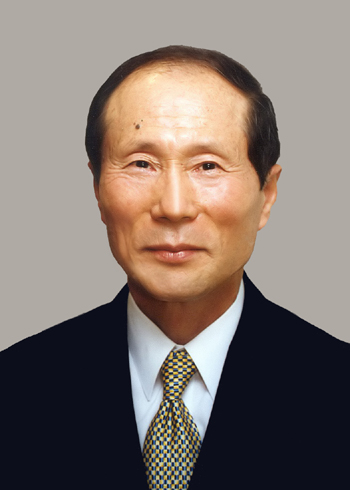 Respected Entrepreneur Chung Elected New Board Chairman of KAIST
Moon-Soul Chung, founder and former CEO of Mirae Corp. who is well known as the first-generation venture entrepreneur in Korea, was elected new chairman of the KAIST Board of Directors at the 193rd Regular Board Meeting held on March 20 in Seoul, school authorities announced Monday, March 23.
Born in 1938 in Imsil, North Jeolla Province, Chung graduated from the Oriental Philosophy Department of Won Kwang University. Chung founded Mirae Corp., a semiconductor equipment manufacturer, in 1983 and got his company listed on KOSDAQ and NASDAQ markets later. His business principles stressing transparency, integrity, and technology, earned the respect of Korean businesspeople.
In 2000, he suddenly announced retirement and handed over the presidency of his company to one of his managing directors. One year later, he donated 30 billion won to KAIST. It was by then the largest amount given by a single donor.
In 2007, he was awarded an honorary degree of doctor of engineering from KAIST. He formerly served as chairman of Venture Leaders Club, President CEO of Lycos Korea and chairman of the board of directors of Kookmin Bank.
2009.03.26 View 15032
Respected Entrepreneur Chung Elected New Board Chairman of KAIST
Moon-Soul Chung, founder and former CEO of Mirae Corp. who is well known as the first-generation venture entrepreneur in Korea, was elected new chairman of the KAIST Board of Directors at the 193rd Regular Board Meeting held on March 20 in Seoul, school authorities announced Monday, March 23.
Born in 1938 in Imsil, North Jeolla Province, Chung graduated from the Oriental Philosophy Department of Won Kwang University. Chung founded Mirae Corp., a semiconductor equipment manufacturer, in 1983 and got his company listed on KOSDAQ and NASDAQ markets later. His business principles stressing transparency, integrity, and technology, earned the respect of Korean businesspeople.
In 2000, he suddenly announced retirement and handed over the presidency of his company to one of his managing directors. One year later, he donated 30 billion won to KAIST. It was by then the largest amount given by a single donor.
In 2007, he was awarded an honorary degree of doctor of engineering from KAIST. He formerly served as chairman of Venture Leaders Club, President CEO of Lycos Korea and chairman of the board of directors of Kookmin Bank.
2009.03.26 View 15032 -
 KAIST Research Team Discovers Process for Rapid Growth of N-Doped CNT Arrays
A team of scientists led by Profs. Sang-Ouk Kim, Won-Jong Lee and Duck-Hyun Lee of the Department of Materials Science and Engineering has found a straightforward process for rapid growth of wall-number selected, nitrogen-doped carbon nanotube (CNT) arrays, university officials said on Monday (March 16).
KAIST researchers prepared highly uniform nanopatterned iron catalyst arrays by tilted deposition through block copolymer nanotemplates. This remarkably fast growth of highly uniform N-doped CNTs, whose material properties and chemical functionalizability are reinforced by N-doping, offers a new area of a large-scale nanofabrication, potentially useful for diverse nano-devices.
Carbon nanotubes (CNTs) are of broad technical interest in electronics, photonics, energy devices, and other applications. However, establishing a straightforward process for mass production of uniform CNTs with desired structure and properties has been a long-standing challenge.
In particular, it was strongly desired to precisely control the numbers of walls and diameter of CNTs, which are decisive parameters for the physical properties of CNTs. In this respect, the preparation of monodisperse catalyst array having a narrow size distribution is generally considered an effective pathway to produce well-defined CNTs, since the number of walls and diameter of the produced CNTs are closely related to the catalyst size.
The finding was featured in the March 13 edition of Nano Letters, a leading journal in the nano technology field.
2009.03.20 View 15930
KAIST Research Team Discovers Process for Rapid Growth of N-Doped CNT Arrays
A team of scientists led by Profs. Sang-Ouk Kim, Won-Jong Lee and Duck-Hyun Lee of the Department of Materials Science and Engineering has found a straightforward process for rapid growth of wall-number selected, nitrogen-doped carbon nanotube (CNT) arrays, university officials said on Monday (March 16).
KAIST researchers prepared highly uniform nanopatterned iron catalyst arrays by tilted deposition through block copolymer nanotemplates. This remarkably fast growth of highly uniform N-doped CNTs, whose material properties and chemical functionalizability are reinforced by N-doping, offers a new area of a large-scale nanofabrication, potentially useful for diverse nano-devices.
Carbon nanotubes (CNTs) are of broad technical interest in electronics, photonics, energy devices, and other applications. However, establishing a straightforward process for mass production of uniform CNTs with desired structure and properties has been a long-standing challenge.
In particular, it was strongly desired to precisely control the numbers of walls and diameter of CNTs, which are decisive parameters for the physical properties of CNTs. In this respect, the preparation of monodisperse catalyst array having a narrow size distribution is generally considered an effective pathway to produce well-defined CNTs, since the number of walls and diameter of the produced CNTs are closely related to the catalyst size.
The finding was featured in the March 13 edition of Nano Letters, a leading journal in the nano technology field.
2009.03.20 View 15930 -
 Workshop on Biomedical IC to Be Held on March 26
KAIST will hold a workshop on "biomedical IC for future healthcare system" on March 26 at a lecture room of the School of Electrical Engineering & Computer Science. The workshop is organized by SEECS and the Korean Institute of Next Generation Computing.
At the workshop, a variety of new technologies expected to expedite the development of biomedical systems will be presented. KAIST Prof. Hoi-Jun Yoo will speak on the "body channel communication" using the human body as the signal transmission medium and Dr. Seung-Hwan Kim of Electronics and Telecommunications Research Institute (ETRI) on a wearable vital sign monitoring system.
Other subjects are CMOS (complementary metal-oxide semiconductor) fully electronic biosensor for biomolecular detection to be presented by KAIST Prof. Gyu-Hyeong Cho; nerve interface and IC (integrated circuit) system design by KAIST Prof. Yoon-gi Nam; design of neural recording and stimulation IC using time-varying magnetic field by KAIST Prof. Seong-Hwan Cho; low power multi-core digital signal processor for hearing aid by Dong-Wook Kim, senior researcher at the Samsung Advanced Institute of Technology; and a non-contact cardiac sensor by KAIST Prof. Seung-Chul Hong.
With the advent of the ageing society, medical expenses of the elderly people are rapidly increasing. As a way to address the issue, interests are growing in "ubiquitous healthcare," a technology that uses a large number of environmental and patient sensors and actuators to monitor and improve patients’ physical and mental condition.
The upcoming workshop is the first academic event on biomedical integrated chips to be held in Korea. The workshop will provide a valuable opportunity for experts in biomedical area to get together and examine the present status of Korean biomedical area and discuss about its future, KAIST officials said.
2009.03.20 View 21178
Workshop on Biomedical IC to Be Held on March 26
KAIST will hold a workshop on "biomedical IC for future healthcare system" on March 26 at a lecture room of the School of Electrical Engineering & Computer Science. The workshop is organized by SEECS and the Korean Institute of Next Generation Computing.
At the workshop, a variety of new technologies expected to expedite the development of biomedical systems will be presented. KAIST Prof. Hoi-Jun Yoo will speak on the "body channel communication" using the human body as the signal transmission medium and Dr. Seung-Hwan Kim of Electronics and Telecommunications Research Institute (ETRI) on a wearable vital sign monitoring system.
Other subjects are CMOS (complementary metal-oxide semiconductor) fully electronic biosensor for biomolecular detection to be presented by KAIST Prof. Gyu-Hyeong Cho; nerve interface and IC (integrated circuit) system design by KAIST Prof. Yoon-gi Nam; design of neural recording and stimulation IC using time-varying magnetic field by KAIST Prof. Seong-Hwan Cho; low power multi-core digital signal processor for hearing aid by Dong-Wook Kim, senior researcher at the Samsung Advanced Institute of Technology; and a non-contact cardiac sensor by KAIST Prof. Seung-Chul Hong.
With the advent of the ageing society, medical expenses of the elderly people are rapidly increasing. As a way to address the issue, interests are growing in "ubiquitous healthcare," a technology that uses a large number of environmental and patient sensors and actuators to monitor and improve patients’ physical and mental condition.
The upcoming workshop is the first academic event on biomedical integrated chips to be held in Korea. The workshop will provide a valuable opportunity for experts in biomedical area to get together and examine the present status of Korean biomedical area and discuss about its future, KAIST officials said.
2009.03.20 View 21178 -
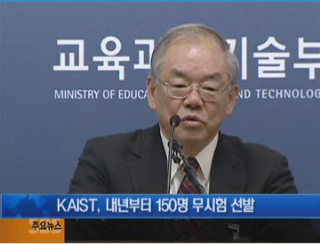 KAIST to Admit 150 Students Based on Recommendations
KAIST will select 150 students from regular high schools, excluding those from special purpose schools, on the basis of their principals" recommendations and interview results beginning in the next school year in an effort to diversify admissions, President Nam-Pyo Suh said on Thursday (March 5).
Award-winning records at math or science competitions will not be put into account in admissions to prevent after-school tutoring aimed at winning such contests.
President Suh unveiled the new admission plan at a news conference in Seoul. "We expect the principals to recommend students with special talents or potential rather than high grades," Suh said. Established under a special law in 1971, KAIST is given full liberty to recruit freshmen students in whatever method it deems right, without being required to use the scholastic ability test scores of applicants as the basic criteria.
KAIST plans to initially select 1,000 students across the country based on recommendations. Admission officers will single out 300 for further review. Out of the 300, the final 150 students will be chosen through in-depth interviews.
"Years of receiving principal recommendations would accumulate a database on high schools nationwide. If a student recommended by a principal turns out to be no good, we might not pick more students from that school," President Suh said.
Over 80 percent of students admitted to KAIST this year were graduates of elite institutions, mostly science high schools. Only 20 percent came from regular high schools. The 150 additional openings next year will be allotted to only those attending ordinary high school.
Ten percent of the 150 openings will be assigned to students from rural areas and another 10 percent will go to students from low-income households.
"One high school was not able to send even a single student to KAIST for the last 10 years. I"m sure there are talented students in that school. If we give the school a chance, the education system will be upgraded," President Suh said.
KAIST-affiliated Korea Science Academy, a Busan-based high school for gifted students, will also adopt similar admission policy of recruiting students solely on the basis on recommendation and interview results from 2011.
2009.03.10 View 12875
KAIST to Admit 150 Students Based on Recommendations
KAIST will select 150 students from regular high schools, excluding those from special purpose schools, on the basis of their principals" recommendations and interview results beginning in the next school year in an effort to diversify admissions, President Nam-Pyo Suh said on Thursday (March 5).
Award-winning records at math or science competitions will not be put into account in admissions to prevent after-school tutoring aimed at winning such contests.
President Suh unveiled the new admission plan at a news conference in Seoul. "We expect the principals to recommend students with special talents or potential rather than high grades," Suh said. Established under a special law in 1971, KAIST is given full liberty to recruit freshmen students in whatever method it deems right, without being required to use the scholastic ability test scores of applicants as the basic criteria.
KAIST plans to initially select 1,000 students across the country based on recommendations. Admission officers will single out 300 for further review. Out of the 300, the final 150 students will be chosen through in-depth interviews.
"Years of receiving principal recommendations would accumulate a database on high schools nationwide. If a student recommended by a principal turns out to be no good, we might not pick more students from that school," President Suh said.
Over 80 percent of students admitted to KAIST this year were graduates of elite institutions, mostly science high schools. Only 20 percent came from regular high schools. The 150 additional openings next year will be allotted to only those attending ordinary high school.
Ten percent of the 150 openings will be assigned to students from rural areas and another 10 percent will go to students from low-income households.
"One high school was not able to send even a single student to KAIST for the last 10 years. I"m sure there are talented students in that school. If we give the school a chance, the education system will be upgraded," President Suh said.
KAIST-affiliated Korea Science Academy, a Busan-based high school for gifted students, will also adopt similar admission policy of recruiting students solely on the basis on recommendation and interview results from 2011.
2009.03.10 View 12875 -
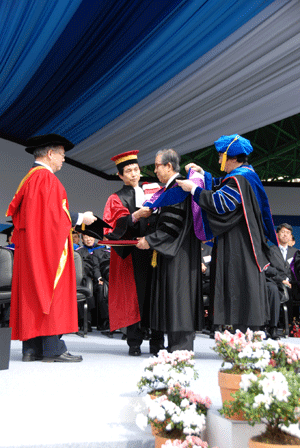 Oriental Medical Scientist Lyu Awarded Honorary Doctorate Degree from KAIST
KAIST awarded an honorary doctorate degree to Keun-Chul Lyu, an Oriental medical scientist who donated property valued at 57.8 billion won (US$56 million) to KAIST at its 2009 commencement ceremony on Feb. 27.
Dr. Lyu who was born in Cheonan, South Chungcheong Province, in 1926 received the first-ever doctorate degree in Oriental medicine from Kyung Hee University in 1976. His researches and practices have had profound impact on Oriental medicine in Korea and elsewhere. He successfully administered acupuncture anesthesia for Caesarean section in 1972, for the first time outside China.
During the three years (1973-1975) he worked at the Kyung Hee University"s Apoplexy Center as superintendent, he developed a new cure incorporating the Oriental and Western medicines for patients seized with apoplexy. With a thesis based on the cure, he earned a Ph.D. in medical engineering from Moscow State Technical University Bauman in 1996.
His outstanding capabilities drew attention in the 1970s when he served as a professor of the Department of Acupuncture at Kyung Hee University and later as deputy director of the university"s Hospital of Oriental Medicine. His record of treating about 50,000 patients a year is still touted among the younger generation of Korean Oriental medicine practitioners.
Dr. Lyu"s unselfish spirit of public service has been well exhibited in that he actively engaged in rendering voluntary medical services in rural and medically disadvantaged areas. He also distinguished himself with his strong interest in donation for humanitarian causes. Among his many charitable activities, his donation of a multipurpose gymnasium and golf practice range to a primary school in his native town Cheonan made so many children happy and helped them develop great ambitions. In 2008, he donated property valued at 57.8 billion won (US$56 million) to KAIST, wishing to help broaden the academic horizon of students studying at Korea"s premier research university.
His donation to KAIST was the largest in amount in the history of private donations to universities in Korea.
2009.03.02 View 13743
Oriental Medical Scientist Lyu Awarded Honorary Doctorate Degree from KAIST
KAIST awarded an honorary doctorate degree to Keun-Chul Lyu, an Oriental medical scientist who donated property valued at 57.8 billion won (US$56 million) to KAIST at its 2009 commencement ceremony on Feb. 27.
Dr. Lyu who was born in Cheonan, South Chungcheong Province, in 1926 received the first-ever doctorate degree in Oriental medicine from Kyung Hee University in 1976. His researches and practices have had profound impact on Oriental medicine in Korea and elsewhere. He successfully administered acupuncture anesthesia for Caesarean section in 1972, for the first time outside China.
During the three years (1973-1975) he worked at the Kyung Hee University"s Apoplexy Center as superintendent, he developed a new cure incorporating the Oriental and Western medicines for patients seized with apoplexy. With a thesis based on the cure, he earned a Ph.D. in medical engineering from Moscow State Technical University Bauman in 1996.
His outstanding capabilities drew attention in the 1970s when he served as a professor of the Department of Acupuncture at Kyung Hee University and later as deputy director of the university"s Hospital of Oriental Medicine. His record of treating about 50,000 patients a year is still touted among the younger generation of Korean Oriental medicine practitioners.
Dr. Lyu"s unselfish spirit of public service has been well exhibited in that he actively engaged in rendering voluntary medical services in rural and medically disadvantaged areas. He also distinguished himself with his strong interest in donation for humanitarian causes. Among his many charitable activities, his donation of a multipurpose gymnasium and golf practice range to a primary school in his native town Cheonan made so many children happy and helped them develop great ambitions. In 2008, he donated property valued at 57.8 billion won (US$56 million) to KAIST, wishing to help broaden the academic horizon of students studying at Korea"s premier research university.
His donation to KAIST was the largest in amount in the history of private donations to universities in Korea.
2009.03.02 View 13743 -
 Prof. Song Develops Nano-Structure to Enhance Power of Rechargeable Lithium-ion Battery
A team of scientists led by Prof. Hyun-Joon Song of the Department of Chemistry, KAIST, developed a nano-structure that could increase the power of rechargeable lithium-ion batteries, university sources said on Monday (Feb. 16).
The research team found that a nano-structured material using copper oxide (CuO) could produce lithium-ion batteries with some 50 percent more capacity than conventional products. The study was published in the online edition of peer-review journal Advanced Materials.
In rechargeable lithium-ion batteries, lithium ions move between the battery"s anode and cathode. The high-energy density of the batteries led to their common use in consumer electronics products, expecially portable devices. Their demand in automotive and aerospace applications is growing, and nano-structured, or nano-enabled batteries are emerging as the new generation of lithium-ion batteries for their edge in recharging time, capacity and battery life.
Graphite has been a popular material for cathodes in lithium-ion batteries. However, graphite cathodes are also blamed for lost capacity due to their consumption of lithium ions, which are linked to shorter battery life.
As such, scientists have been looking for materials that could replace graphite in cathodes, and silicon and metal oxide have been studied as possible alternatives.
2009.02.17 View 13581
Prof. Song Develops Nano-Structure to Enhance Power of Rechargeable Lithium-ion Battery
A team of scientists led by Prof. Hyun-Joon Song of the Department of Chemistry, KAIST, developed a nano-structure that could increase the power of rechargeable lithium-ion batteries, university sources said on Monday (Feb. 16).
The research team found that a nano-structured material using copper oxide (CuO) could produce lithium-ion batteries with some 50 percent more capacity than conventional products. The study was published in the online edition of peer-review journal Advanced Materials.
In rechargeable lithium-ion batteries, lithium ions move between the battery"s anode and cathode. The high-energy density of the batteries led to their common use in consumer electronics products, expecially portable devices. Their demand in automotive and aerospace applications is growing, and nano-structured, or nano-enabled batteries are emerging as the new generation of lithium-ion batteries for their edge in recharging time, capacity and battery life.
Graphite has been a popular material for cathodes in lithium-ion batteries. However, graphite cathodes are also blamed for lost capacity due to their consumption of lithium ions, which are linked to shorter battery life.
As such, scientists have been looking for materials that could replace graphite in cathodes, and silicon and metal oxide have been studied as possible alternatives.
2009.02.17 View 13581 -
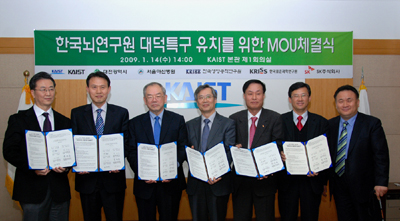 Six Organizations Join Forces to Induce Projected National Brain Institute to Daejeon
Six major organizations including KAIST have joined forces to help Daejeon City to win the government approval to build the envisioned Korean Brain Institute in Daedeok Research Complex.
The six organizations signed a memorandum of understanding on cooperating in establishing the government-funded institute built within the Daedeok Research Complex in the city of Daejeon, at KAIST on Jan. 14. The six organizations are KAIST, the Daejeon City Government, Korea Research Institute of Bioscience and Biotechnology, Korea Research Institute of Standard and Science, Asan Medical Center, and SK Corp., a pioneer in effective therapeutic invention for serious brain disorders.
The partnership of the six organizations is expected to bring a broad-based cooperation opportunities and create a massive synergy effect in the brain science researches and the development of new therapeutic treatment for brain disorders by combining their resources and infrastructures.
The six organizations have also built an international research network with such globally-renowned brain research institutions as RIKEN, a large natural sciences research institute in Japan, Max Plank Institute in Germany, Federal Institute of Technology, Lausanne, in Switzerland and Brain Research Institute of University of Queensland in Australia. The research network is under the support and guidance of Dennis Choi, a prominent neuroscientist who once served as the President of the Society for Neuroscience and is currently a professor in the Departments of Neurology and biology at Emory University.
The tentatively titled Korea Brain Institute is envisioned to help fight brain disorders and create Korea"s new growth engine, as well as lengthening life span, by conducting convergence researches in nero science, brain science and pharmacology. If the consortium of the six organizations wins the government approval to build the proposed institute within the Daedeok complex, the central government and the Daejeon city government are expected to pour a total of 329.7 billion won into the project by 2020.
2009.01.14 View 20410
Six Organizations Join Forces to Induce Projected National Brain Institute to Daejeon
Six major organizations including KAIST have joined forces to help Daejeon City to win the government approval to build the envisioned Korean Brain Institute in Daedeok Research Complex.
The six organizations signed a memorandum of understanding on cooperating in establishing the government-funded institute built within the Daedeok Research Complex in the city of Daejeon, at KAIST on Jan. 14. The six organizations are KAIST, the Daejeon City Government, Korea Research Institute of Bioscience and Biotechnology, Korea Research Institute of Standard and Science, Asan Medical Center, and SK Corp., a pioneer in effective therapeutic invention for serious brain disorders.
The partnership of the six organizations is expected to bring a broad-based cooperation opportunities and create a massive synergy effect in the brain science researches and the development of new therapeutic treatment for brain disorders by combining their resources and infrastructures.
The six organizations have also built an international research network with such globally-renowned brain research institutions as RIKEN, a large natural sciences research institute in Japan, Max Plank Institute in Germany, Federal Institute of Technology, Lausanne, in Switzerland and Brain Research Institute of University of Queensland in Australia. The research network is under the support and guidance of Dennis Choi, a prominent neuroscientist who once served as the President of the Society for Neuroscience and is currently a professor in the Departments of Neurology and biology at Emory University.
The tentatively titled Korea Brain Institute is envisioned to help fight brain disorders and create Korea"s new growth engine, as well as lengthening life span, by conducting convergence researches in nero science, brain science and pharmacology. If the consortium of the six organizations wins the government approval to build the proposed institute within the Daedeok complex, the central government and the Daejeon city government are expected to pour a total of 329.7 billion won into the project by 2020.
2009.01.14 View 20410 -
 Five KAIST Students Offered Internship from Qualcomm
Qualcomm Inc., a wireless telecommunications research and development company based in San Diego, California, has offered internship for five KAIST students of the Department of Electrical Engineering and Computer Science, university authorities said on Monday (Jan. 5).
The five students who are graduate and doctoral students studying communication and RFID (radio frequency identification) design will be working for six months at Qualcomm"s RFIC (radio frequency integrated circuits) Department in Santa Clara, Calif., as co-researchers. These interns will receive about $7,000 a month each with other benefits.
It is the first time that Qualcomm has offered internship for students outside the U.S., according to external relations officials at KAIST. Students who have shown outstanding research output during the internship period will be offered employment at Qualcomm.
"Qualcomm"s internship for KAIST students is designed to help young Korean talents to become professionals who will lead global advancement in the IT sector and strengthen its research network with Korea," Seung-Soo Kim, senior director of Qualcomm Korea, was quoted as saying.
Qualcomm plans to continue providing internship program for KAIST students, as well as pursuing joint research initiatives, the officials said.
2009.01.08 View 17686
Five KAIST Students Offered Internship from Qualcomm
Qualcomm Inc., a wireless telecommunications research and development company based in San Diego, California, has offered internship for five KAIST students of the Department of Electrical Engineering and Computer Science, university authorities said on Monday (Jan. 5).
The five students who are graduate and doctoral students studying communication and RFID (radio frequency identification) design will be working for six months at Qualcomm"s RFIC (radio frequency integrated circuits) Department in Santa Clara, Calif., as co-researchers. These interns will receive about $7,000 a month each with other benefits.
It is the first time that Qualcomm has offered internship for students outside the U.S., according to external relations officials at KAIST. Students who have shown outstanding research output during the internship period will be offered employment at Qualcomm.
"Qualcomm"s internship for KAIST students is designed to help young Korean talents to become professionals who will lead global advancement in the IT sector and strengthen its research network with Korea," Seung-Soo Kim, senior director of Qualcomm Korea, was quoted as saying.
Qualcomm plans to continue providing internship program for KAIST students, as well as pursuing joint research initiatives, the officials said.
2009.01.08 View 17686